.
Upstream
fish passage in box culverts: how do fish and turbulence interplay?
by Hang WANG and Hubert CHANSON (h.chanson@uq.edu.au)
School of Civil Engineering, The University of Queensland,
Brisbane QLD 4072, Australia
Presentation
 Culverts are covered channels designed to pass floodwaters
beneath an embankment, typically a roadway or railroad. Figures 1 to 3
present a few examples of box culvert operation in Australia, for less than
design flow conditions. Culverts may cost about 15% of total road
construction costs (HEE 1969). Their designs are very diverse, using various
shapes and construction materials determined by stream width, peak flows,
stream gradient, and minimum cost (HENDERSON 1966, HEE 1969). While the key
design parameters of a culvert are its design discharge and the maximum
acceptable afflux (CHANSON 2004), the variability in culvert dimensions is
closely linked to the various constraints of each site, resulting in a wide
diversity in flow patterns.
Culverts are covered channels designed to pass floodwaters
beneath an embankment, typically a roadway or railroad. Figures 1 to 3
present a few examples of box culvert operation in Australia, for less than
design flow conditions. Culverts may cost about 15% of total road
construction costs (HEE 1969). Their designs are very diverse, using various
shapes and construction materials determined by stream width, peak flows,
stream gradient, and minimum cost (HENDERSON 1966, HEE 1969). While the key
design parameters of a culvert are its design discharge and the maximum
acceptable afflux (CHANSON 2004), the variability in culvert dimensions is
closely linked to the various constraints of each site, resulting in a wide
diversity in flow patterns.
In recent decades, the ecological impact of culverts on natural
streams and rivers led has been acknowledged. The culvert discharge capacity
is basically based upon hydrological and hydraulic engineering
considerations, which may result in large flow velocities creating some fish
passage barrier. One primary ecological concern regarding culvert crossings
is the potential velocity barrier to upstream fish passage resulting from
the constriction of the channel as illustrated in Figures 1 to 3. Baffles
may be installed along the invert to provide some fish-friendly alternative
(CHORDA et al. 1995, OLSEN and TULLIS 2013, CHANSON and UYS 2016). At
low flows, baffles decrease the flow velocity and increase the water depth
to facilitate fish passage. For larger discharges, baffles would induce
locally lower velocities and generate recirculation regions. Unfortunately,
baffles can reduce drastically the culvert discharge capacity for a given
afflux (LARINIER 2002).
On fish-turbulence interplay
The critical parameters of a culvert in terms of fish passage are the
dimensions of the barrel, including its length and cross-sectional
characteristics and the invert slope. The broad range of culvert designs
results in a wide diversity in turbulent flow patterns observed in prototype
culverts. There is no simple technical means for measuring the turbulence
characteristics in fish passage with baffles, although it is understood that
the flow turbulence plays a key role in fish behaviour (LIU et al. 2006,
YASUDA 2011). Seminal studies argued that the most important parameters to
assist fish passage include the turbulence intensity, Reynolds stress
tensor, turbulent kinetic energy, vorticity, dissipation (HOTCHKISS 2002,
NIKORA et al. 2003). The interactions between fish and turbulence are very
complicated, and naive "turbulence metrics cannot explain all the
swimming path lines or behaviors" (GOETTEL et al. 2013).
First mentioned by LEONARDO DA VINCI, the interactions between
swimming fish and vortical structures involve a broad range of relevant
length scales (LUPANDIN 2005, WEBB and COTEL 2011). The turbulent flow
patterns are one key element determining the capacity of the system to pass
successfully targeted fish species. A seminal discussion argued for the role
of secondary flow motion and: "the importance of performing
three-dimensional turbulent flow measurements to precisely identify the
effects of secondary flows on fish motion" (PAPANICOLAOU and
TALEBBEYDOKHTI 20 002). Such a discussion was extended by recent
contributions, suggesting that "a proper study of turbulence effects on
fish behaviour should involve, in addition to turbulence energetics,
consideration of fish dimensions in relation to the spectrum of turbulence
scales" (NIKORA et al. 2003), and that large-scale "turbulent
structures associated with wakes can be beneficial if fish are able to
exploit them" (PLEW et al. 2007). While the literature on culvert fish
passage focused mostly on fast-swimming fish species, recent studies
acknowledged the needs for better guidelines for small-bodied fish including
juveniles, in particular in eastern Australia.

Theoretical and experimental considerations
Any experimental study must be based upon the basic concept and principles
of similitude to ensure a reliable extrapolation of the results from the
hydraulic model study to the prototype. The presentation of numerical
results must have the most extensive validity, and dimensional analysis is
the basic procedure to deliver dimensionless parameters. For any dimensional
analysis of upstream fish passage in a box culvert, the relevant parameters
include the fluid properties and physical constants, the fish
characteristics, the fish motion characteristics, the channel geometry and
initial flow conditions. It becomes

where U is the Eulerian fish speed, u' is the fish speed fluctuation, V is
the fluid velocity, v' is the fluid velocity fluctuation, Fr is the Froude
number, Re is the Reynolds number, Mo is the Morton number... (WANG and
CHANSON 2017,2018). The result emphasises a number of key parameters and
variables relevant to upstream fish passage in turbulent open channel flows,
including the ratio u'/v' of fish speed fluctuations to fluid velocity
fluctuations, the ratio of fish response time to turbulent time scales, the
ratios of fish dimension to turbulent length scale, and the fish species. To
date, few st udies provided quantitative and detailed characteristics of
both fish motion and fluid flow (NIKORA et al. 2003, PLEW et al. 2007). Even
fewer studies reported fish speed fluctuations and fluid velocity
fluctuations, as well as fish response time and integral time scales (WANG
et al. 2016). The fish swimming accelerations have also important
implications in terms of energy expenditure required to swim against the
current over a period of time.
udies provided quantitative and detailed characteristics of
both fish motion and fluid flow (NIKORA et al. 2003, PLEW et al. 2007). Even
fewer studies reported fish speed fluctuations and fluid velocity
fluctuations, as well as fish response time and integral time scales (WANG
et al. 2016). The fish swimming accelerations have also important
implications in terms of energy expenditure required to swim against the
current over a period of time.
When a fish swims upstream in a culvert barrel, its motion
provides critical information on locomotion dynamics that can be used to
calculate energy expenditure, with significant implications for the
understanding of energetics and biomechanics of aquatic propulsion. Assuming
carangiform propulsion, the power or rate of work that the fish expends
during swimming may be calculated as the product of the thrust times the
relative fish speed. Neglecting efforts spent during lateral and upward
motion, the mean rate of work by the fish may be expressed (WANG and CHANSON
2017,2018):

with P the instantaneous power spent by the fish to provide thrust and
(Ux+Vx) is the local relative fish speed, at the fish location. This
Equation expresses the rate of working by the fish, to counterbalance the
effects of inertia, drag and gravity, albeit it does not take into account
heat transfer nor any fish metabolism. It provides a deterministic means to
quantify the power and energy expended by the moving fish, to counterbalance
the drag, inertia and gravity forces. Importantly the work spent by the
moving fish is proportional to the cube of the fluid velocity. Thus fish
will minimise their energy consumption by swimming upstream in slow-velocity
regions. For example, a reduction in 20% in fluid velocity is associated
with a 60% reduction in power that the fish expends during swimming.
Recent physical experiments were conducted in a 12 m long
0.5 m wide tilting flume at The University of Queensland, using a
fish-friendly water reticulation system. Three main boundary conditions were
tested: (a) a reference configuration with smooth boundaries, (b) a rough
wall configuration with a very rough invert and rough left sidewall (Fig.
4), and (c) a baffle configuration with small triangular baffles in the left
corner (Fig. 5). The latter configuration generated a combination of
singular losses at each baffle superposed with basic skin friction losses.
Observations showed the presence of recirculation cells behind each baffle.
The rough wall configuration induced regular losses and almost no
recirculation region. Visual observations of small-body mass fish
propagation in the experimental channel showed a number of trends. In the
smooth channel, the fish tended to swim next to the sidewalls and corners
(WANG et al. 2016, CABONCE et al. 2017). There was no obvious preference
between the left and right sidewalls. With the other two configurations, the
fish swam against the current preferentially in the left corner of the
flume, where the triangular baffles were located or at the connection
between rough invert and left rough wall. The observations showed overall
that the two special boundary conditions (rough wall & triangular
baffles) facilitated substantially their upstream passage. Despite basic
differences between the two configurations, it is believes that the
enhancement was linked to the development of sizeable slow-velocity regions
(CABONCE et al. 2017). In the smooth boundary channel, only 5-10% of the
flow area experienced time-averaged longitudinal velocities less than
0.5×Vmean, where Vmean is the bulk velocity or cross-sectional averaged
velocity. This relative surface area was considerably higher in the
triangular baffle channel, with 10-25% of the flow area experiencing Vx <
0.5×Vmean, depending upon the flow rate and baffle configuration. With the
rough sidewall and invert boundary conditions, the percentage of the flow
area with time-averaged velocities less than 0.5×Vmean was 17%.
Summary
Standard box culverts may constitute barriers to the upstream passage of
weak swimming fish, with adverse impact on the upstream and downstream
catchment bio-diversity. It is believed that fish-turbulence interplay may
facilitate upstream migration, albeit an optimum design must be based upon a
careful characterisation of both hydrodynamics and fish kinematics. Basic
dimensional considerations highlight a number of key parameters relevant to
upstream fish passage, including the ratio of fish speed fluctuations to
fluid velocity fluctuations, the ratio of fish response time to turbulent
time scales, the rati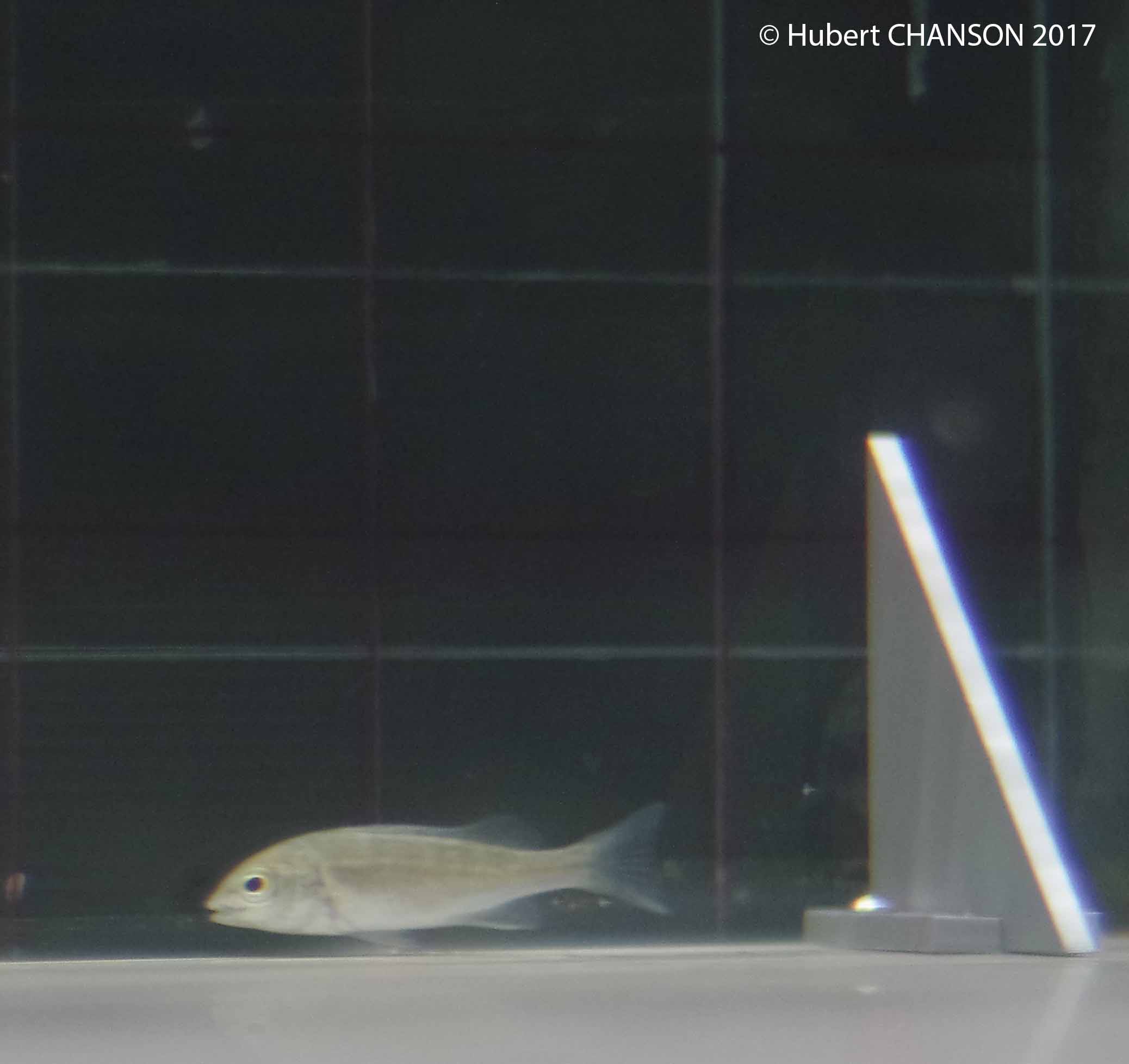 os of fish dimension to turbulent length scale, and the fish
species. The latter may be possibly a most important variable, since design
guidelines developed for one species might be inadequate for another
species. The application of the equation of conservation of momentum
provides a deterministic method to quantify the fish thrust and
instantaneous power expended by the fish to provide thrust. The power and
work required to deliver thrust is proportional to the cube of the local
fluid velocity. Fish can minimise their energy consumption by swimming
upstream in slow-velocity regions. Visual observations in a relatively large
channel showed that small-body mass fish tended to swim next to the sidewall
and corners, and favoured naturally slow-velocity regions. The implications
in terms of fish-friendly box culverts design are developed by CHANSON and
LENG (2021),
os of fish dimension to turbulent length scale, and the fish
species. The latter may be possibly a most important variable, since design
guidelines developed for one species might be inadequate for another
species. The application of the equation of conservation of momentum
provides a deterministic method to quantify the fish thrust and
instantaneous power expended by the fish to provide thrust. The power and
work required to deliver thrust is proportional to the cube of the local
fluid velocity. Fish can minimise their energy consumption by swimming
upstream in slow-velocity regions. Visual observations in a relatively large
channel showed that small-body mass fish tended to swim next to the sidewall
and corners, and favoured naturally slow-velocity regions. The implications
in terms of fish-friendly box culverts design are developed by CHANSON and
LENG (2021),
Footnotes
(1) Froude Number
The Froude number is proportional to the square root of
the ratio of the inertial forces over the weight of fluid. The Froude number
is used generally for scaling free surface flows, open channels and
hydraulic structures. Although the dimensionless number was named after
William Froude, several French researchers used it before. DUPUIT (1848) and
BRESSE (1860) highlighted the significance of the number to differentiate
the open channel flow regimes. BAZIN (1865) confirmed experimentally the
findings. Ferdinand Reech introduced the dimensionless number for testing
ships and propellers in 1852. The number is called the Reech-Froude number
in France (CHANSON 1999, pp. 39-46). In
rectangular channels, the Froude number is commonly defined as the ratio of
the flow velocity to the square root of the product of g times d, where d is
the flow depth and g is the gravity acceleration (g = 9.794 m/s2 in
Brisbane).
(2) Reynolds number
The Reynolds number is a dimensionless number proportional to
the ratio of the inertial force over the viscous force. It is named after
the British physicist and mathematician Osborne Reynolds (1842–1912).
Detailed photographs
Photo
No. 1 : Culvert outlet operation in Norman Creek on 30 March
2017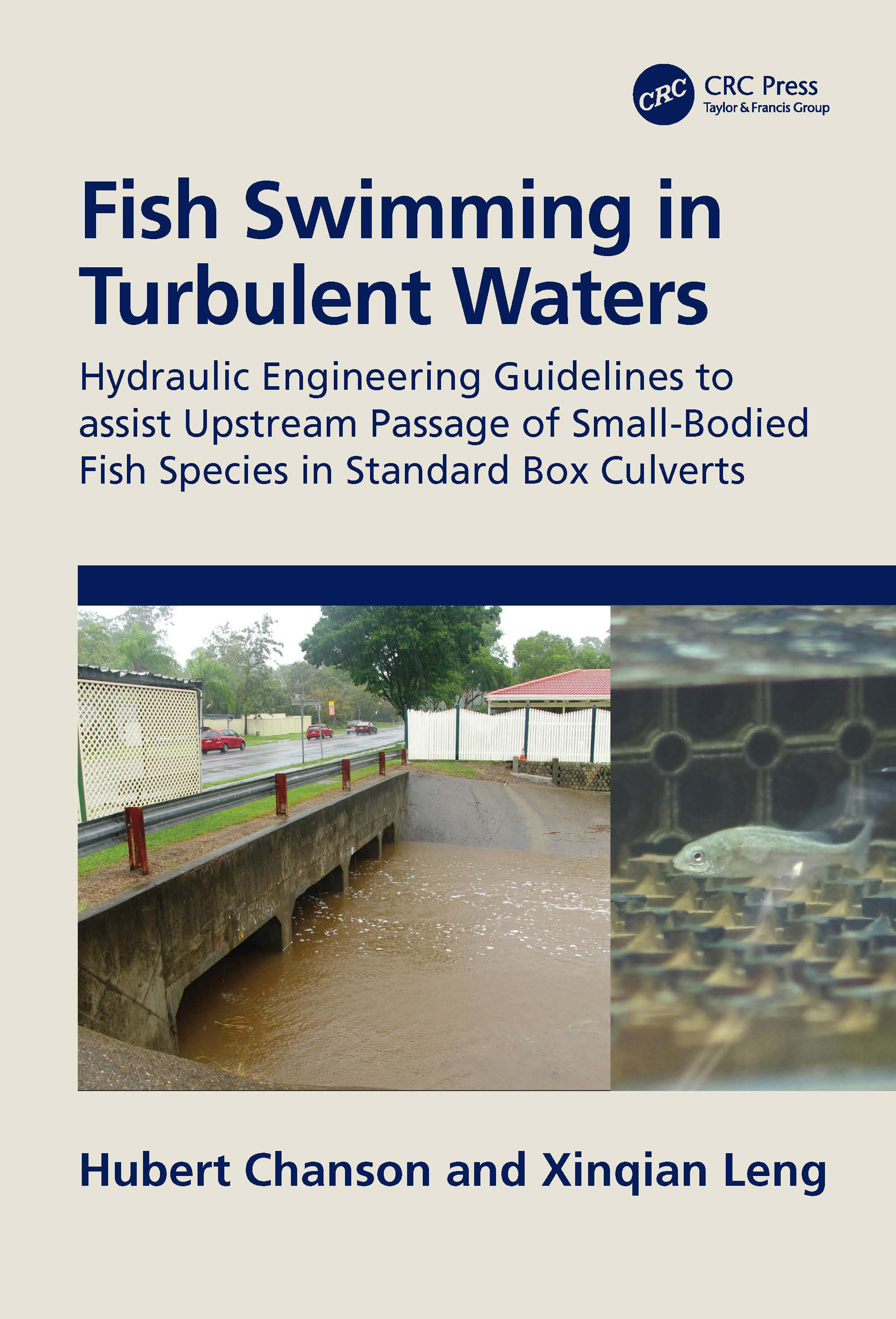
Photo
No. 2 : Culvert outlet on Whitton Creek on 30 March 2017
Photo
No. 3 : Culvert inlet along Caswell Creek on 31 March
2017
Photo
No. 4 : Juvenile Silver perch (Bidyanus bidyanus)
swimming upstream in a 12 m long 0.5 m wide rectangular channel equipped
with very rough invert and left sidewall
Photo
No. 5 : Juvenile Silver perch (Bidyanus bidyanus)
swimming in the stagnation zone upstream of a small triangular baffle in a
12 m long 0.5 m wide rectangular channel
Related
links
Short course
Continuing Professional Development Course on Hydraulic Design of
Fish-Friendly Standard Box Culvert on 3-4 June 2019 at UQ St Lucia {https://www.eait.uq.edu.au/fish-culvert}
Video movies on YouTube and UQeSpace
Fish-friendly waterways and culverts - Integration of
hydrodynamics and fish turbulence interplay & interaction - {https://youtu.be/GGWTWDOmoSQ}
CHANSON, H. (2020). "Hydraulics of open channel flow: practical
experiments at the University of Queensland, Australia." Collection,
Generic Document, The University of Queensland, School of Civil
Engineering, Brisbane, Australia (ISBN 978-1-74272-311-2). {https://espace.library.uq.edu.au/collection/UQ:734960}
LI, Y., LANCASTER, O., and CHANSON, H. (2020).
"Backwater in a Long Channel." Generic Document, The University of
Queensland, School of Civil Engineering, Brisbane, Australia (ISBN
978-1-74272-311-2). {https://espace.library.uq.edu.au/view/UQ:734963}
WUTHRICH, D., WUPPUKONDUR, A., and CHANSON, H. (2020).
"Hydraulics of Culverts." Generic Document, The University of Queensland,
School of Civil Engineering, Brisbane, Australia (ISBN 978-1-74272-311-2).
{https://espace.library.uq.edu.au/view/UQ:734964}
"Fish Swimming in Turbulent Waters. Hydraulics Guidelines
to assist Upstream Fish Passage in Box Culverts." CRC Press, Taylor and Francis Group, Leiden,
The Netherlands, 202 pages and 19 video movies, 2021 (DOI: 10.1201/9781003029694)
(ISBN 978-0-367-46573-5 [Hardback]; 978-1-003-02969-4 [e-book]). (Supporting material)
Internet resources
Weather forecast BoM {http://www.bom.gov.au/}
Queensland weather forecast {http://www.bom.gov.au/weather/qld/forecasts.shtml}
Photographs of rivers in Australia {http://www.uq.edu.au/~e2hchans/photo.html#riv_australia}
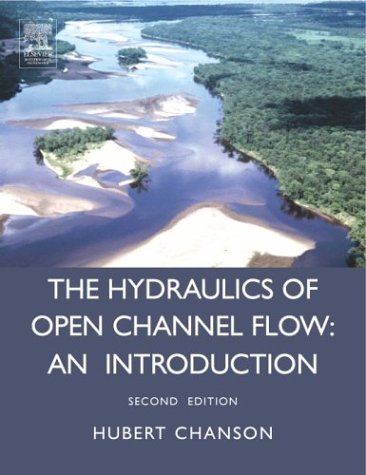
References
CABONCE, J., FERNANDO, R., WANG, H., and CHANSON, H. (2017). "Using
Triangular Baffles to Facilitate Upstream Fish Passage in Box Culverts:
Physical Modelling." Hydraulic Model Report No. CH107/17, School of
Civil Engineering, The University of Queensland, Brisbane, Australia, 130
pages (ISBN 978-1-74272-186-6). (PDF
file at UQeSpace)
CHANSON, H. (1999). "The
Hydraulics of Open Channel Flow : An Introduction." Butterworth-Heinemann,
1st edition, London, UK, 512 pages (ISBN 0 340 74067 1).
CHANSON, H. (2004). "The
Hydraulics of Open Channel Flow : An Introduction." Butterworth-Heinemann,
2nd edition, Oxford, UK, 630 pages (ISBN 978 0 7506 5978 9). Order
form
CHANSON, H., and UYS, W. (2016)."Baffle Designs to Facilitate Fish Passage
in Box Culverts: A Preliminary Study." Proceedings
of
6th IAHR International Symposium on Hydraulic Structures, Hydraulic
Structures and Water System Management, B. CROOKSTON & B. TULLIS
Editors, 27-30 June, Portland OR, USA, pp. 295-304 (DOI:
10.15142/T300628160828) (ISBN 978-1-884575-75-4). (PDF
file) (Link
at USU) (ISHS2016
proceedings) (Reprint
at UQeSpace)
CHANSON, H., and LENG, X. (2018). "On the Development of Hydraulic
Engineering Guidelines for Fish-Friendly Standard Box Culverts, with a Focus
on Small-Body Fish." Civil Engineering Research Bulletin No. 25,
School of Civil Engineering, The University of Queensland, Brisbane,
Australia, 79 pages (ISBN 978-1-74272-208-5). (Deposit
at UQeSpace)
CHORDA, J., LARINIER, M., and FONT, S. (1995). "Le Franchissement par les
Poissons Migrateurs des Buses et Autres Ouvrages de Rétablissement des
Ecoulements Naturels lors des Aménagements Routiers et Autoroutes. Etude
Expérimentale." Rapport HYDRE n°159 - GHAAPPE n°95-03, Groupe
d'Hydraulique Appliquée aux Aménagements Piscicoles et à la Protection de
l'Environnement, Service d'Etudes Techniques des Routes et Autoroutes,
Toulouse, France, 116 pages (in French).
GOETTEL, M.T., ATKINSON, J.F., and BENNETT, S.J. (2015). "Behavior of
western blacknose dace in a turbulence modified flow field." Ecological
Engineering, Vol. 74, pp. 230-240.
HEE, M. (1969). "Hydraulics of Culvert Design Including Constant Energy
Concept." Proc. 20th Conf. of Local Authority Engineers, Dept. of
Local Govt, Queensland, Australia, paper 9, pp. 1-27.
HENDERSON, F.M. (1966). "Open Channel Flow." MacMillan Company, New
York, USA.
HOTCHKISS, R. (2002). "Turbulence investigation and reproduction for
assisting downstream migrating juvenile salmonids, Part I." BPA Report
DOE/BP-00004633-I, Bonneville Power Administration, Portland, Oregon,
138 pages.
LARINIER, M. (2002). "Fish Passage through Culverts, Rock Weirs and
Estuarine Obstructions." Bulletin Français de Pêche et Pisciculture,
Vol. 364, No. 18, pp. 119-134.
LENG, X., and CHANSON (2020). "“Vegan” Culvert: Application of Hybrid
Modelling in Modern Hydraulic Structures." Proceedings of the 8th IAHR
International Symposium on Hydraulic Structures ISHS2020, 12-15 May
2020, Santiago, Chile, R. JANSSEN and H. CHANON Editors, The University of
Queensland, Brisbane, Australia, Invited paper, 17 pages (DOI:
10.14264/uql.2020.516) (ISBN 978-1-74272-309-9). (PDF
file at UQeSpace)
LIU, M.M., RAJARATNAM, N., and ZHU, D.Z. (2006). "Mean flow and turbulence
structure in vertical slot fishways." Journal of Hydraulic Engineering,
ASCE, Vol. 139, No. 4, pp. 424-432.
LUPANDIN, A.I. (2005). "Effect of flow turbulence on swimming speed of
fish." Biology Bulletin, Vol. 32, No. 5, pp. 461-466.
NIKORA, V.I., ABERLE, J., BIGGS, B.J.F., JOWETT, I.G., and SYKES, J.R.E.
(2003). "Effects of Fish Size, Time-to-Fatigue and Turbulence on Swimming
Performance: a Case Study of Galaxias Maculatus." Journal of Fish
Biology, Vol. 63, pp. 1365-1382.
OLSEN, A. and TULLIS, B. (2013). "Laboratory Study of Fish Passage and
Discharge Capacity in Slip-Lined, Baffled Culverts." Journal of
Hydraulic Engineering, ASCE, Vol. 139, No. 4, pp. 424–432.
PAPANICOLAOU, A.N., and TALEBBEYDOKHTI, N. (2002). Discussion of "Turbulent
open-channel flow in circular corrugated culverts." Journal of Hydraulic
Engineering, ASCE, Vol. 128, No. 5, pp. 548–549.
PLEW, D.R., NIKORA, V.I., LARNE, S.T., SYKES, J.R.E., and COOPER, G.G.
(2007). "Fish swimming speed variability at constant flow: Galaxias
maculatus." New Zealand Journal of Marine and Freshwater Research,
Vol. 41, pp. 185-195 (DOI: 0028-8330/07/4102-0185).
WANG, H., and CHANSON, H. (2017). "Baffle Systems to Facilitate Upstream
Fish Passage in Standard Box Culverts: How About Fish-Turbulence Interplay?"
Proceedings of 37th IAHR World Congress, IAHR & USAINS Holding
Sdn. Bhd. Publ., Editors Aminuddin Ab. Ghani, Ngai Weng Chan, Junaidah
Ariffin, Ahmad Khairi Abd Wahab, Sobri Harun, Amir Hashim Mohamad Kassim and
Othman Karim, Kuala Lumpur, Malaysia, 13-18 August, Vol. 3, Theme 3.1, pp.
2586-2595 (ISSN 2521-7127 (USB); ISSN 2521-716X (Online)). (PDF file) (Postprint at
UQeSpace)
WANG, H., and CHANSON, H. (2018). "Modelling Upstream Fish Passage in
Standard Box Culverts: Interplay between Turbulence, Fish Kinematics, and
Energetics." River Research and Applications, Vol. 34, No. 3,
pp.244-252 (DOI: 10.1002/rra.3245) (ISSN 1535-1467). (PDF
file) (Preprint
at UQeSpace)
WANG, H., and CHANSON, H. (2018). "On Upstream Fish Passage in Standard Box
Culverts: Interactions between Fish and Turbulence." Journal of
Ecohydraulics, IAHR, Vol. 3, No. 1, pp. 18-29 (DOI:
10.1080/24705357.2018.1440183) (ISSN 2470-5357 [Print] 2470-5365 [Online]).
(PDF)
(Record
at UQeSpace)
WANG, H., CHANSON, H., KERN, P., and FRANKLIN, C. (2016). "Culvert
Hydrodynamics to enhance Upstream Fish Passage: Fish Response to
Turbulence." Proceedings of 20th Australasian Fluid Mechanics Conference,
Australasian Fluid Mechanics Society, G. IVEY, T. ZHOU, N. JONES, S. DRAPER
Editors, Perth WA, Australia, 5-8 December, Paper 682, 4 pages (ISBN 978 2
74052 377 6). (PDF
file) (Preprint
at UQeSpace)
WEBB, P.W., and COTEL, A.J. (2011). "Stability and Turbulence." in
"Encyclopedia of Fish Physiology: from Genome to Environment", Academic
Press, Dan Diego, USA, Vol. 1-3, pp. 581-586 (DOI:
10.1016/B978-0-12-374553-8.00221-5).
YASUDA, Y. (2011). "Guideline for Fish Passages for Engineers - based on
Flow Conditions and Structure of Fish Passages." Corona Publishing,
NPO Society for Fishway in Hokkaido, Tokyo, Japan, 144 pages (ISBN:
978-4-339-05233-6).
Video movie on YouTube
Fish-friendly waterways and culverts - Integration of hydrodynamics and fish
turbulence interplay & interaction - {https://youtu.be/GGWTWDOmoSQ}
Bibliography
ALEXANDER, R.M. (1982)."Locomotion of Animals." Blackie, Glasgow,
UK, 163 pages.
ALEXANDER, R.M. (2003)."Principles of Animal Locomotion." Princeton
University Press, Princeton NJ, USA, 371 pages.
CABONCE, J., FERNANDO, R., WANG, H., and CHANSON, H. (2017). "Culvert
Baffles to Facilitate Upstream Fish Passage." Proceedings of 13th
Hydraulics in Water Engineering Conference HIWE2017, Engineers
Australia, Sydney, 13-16 November, 9 pages (ISBN 978-1-925627-03-9). (PDF file) (Record at UQeSpace)
CABONCE, J., WANG, H., and CHANSON, H. (2018). "Ventilated Corner Baffles to
Assist Upstream Passage of Small-Bodied Fish in Box Culverts." Journal
of Irrigation and Drainage Engineering, ASCE, Vol. 144, No. 8, Paper
0418020, 8 pages (DOI: 10.1061/(ASCE)IR.1943-4774.0001329) (ISSN 0733-9437
[Print]; ISSN: 1943-4774 [online]). (PDF
file) (Preprint
at UQeSpace)
CABONCE, J., FERNANDO, R., WANG, H., and CHANSON, H. (2019). "Using Small
Triangular Baffles to Facilitate Upstream Fish Passage in Standard Box
Culverts." Environmental Fluid Mechanics, Vol. 19, No. 1, pp.
157–179 (DOI: 10.1007/s10652-018-9604-x) (ISSN 1567-7419 [Print] 1573-1510
[Online]). (PDF
file) (Postprint
at UQeSpace)
CHANSON, H. (2000). "Introducing Originality and Innovation in Engineering
Teaching: the Hydraulic Design of Culverts." European Journal of
Engineering Education, Vol. 25, No. 4, pp. 377-391 (DOI:
10.1080/03043790050200421) (ISSN 0304-3797). (PDF
file at UQeSpace) (Download PDF File)
CHANSON, H. (2002). "Hydraulics of a Large Culvert beneath the Roman
Aqueduct of Nîmes." Journal of Irrigation and Drainage Engineering,
ASCE, Vol. 128, No. 5, pp. 326-330 (DOI: 10.1061/(ASCE)0733-9437(2002)128)
(ISSN 0733-9437). (PDF
file at UQeSpace) (Download PDF File)
CHANSON, H. (2007). "Hydraulic Performances of Minimum Energy Loss Culverts
in Australia." Journal of Performances of
Constructed Facilities, ASCE, Vol. 21, No. 4, pp. 264-272 (doi:10.1061/(ASCE)0887-3828(2007)21:4(264))
(ISSN 0887-3828). (PDF
file) (Record
at
UQeSpace)
CHANSON, H. (2014). "Applied Hydrodynamics: An
Introduction." CRC Press, Taylor & Francis
Group, Leiden, The Netherlands, 448 pages & 21 video movies (ISBN
978-1-138-00093-3). (Record
at UQeSpace)
CHANSON, H. (2019). "Utilising the Boundary Layer to Help Restore the
Connectivity of Fish Habitats and Populations. An Engineering Discussion." Ecological
Engineering, Vol. 141, Paper 105613, 5 pages (DOI:
10.1016/j.ecoleng.2019.105613). (PDF
file) (Postprint
at UQeSpace)
CHANSON, H. (2020). "Low Velocity Zone in Smooth Pipe Culvert with and
without Streamwise Rib for Fish Passage." Journal of Hydraulic
Engineering, ASCE, Vol. 146, No. 9, Paper 04020059, 10 pages (DOI:
10.1061/(ASCE)HY.1943-7900.0001789) (ISSN 0733-9429). (PDF
file) (Preprint
at UQeSpace)
CHANSON (2020). "Hydraulic Modelling of Pipe Culverts and Low-Velocity Zones
at Less-Than-Design Flows." Proceedings of the 8th IAHR International
Symposium on Hydraulic Structures ISHS2020, 12-15 May 2020, Santiago,
Chile, R. JANSSEN and H. CHANSON Editors, The University of Queensland,
Brisbane, Australia, 10 pages (DOI: 10.14264/uql.2020.580) (ISBN
978-1-74272-309-9). (PDF
file at UQeSpace)
CHANSON, H. (2020). "Low Velocity Zone in Smooth Pipe Culvert with and
without Streamwise Rib for Fish Passage." Journal of Hydraulic
Engineering, ASCE, Vol. 146, No. 9, Paper 04020059, 10 pages (DOI:
10.1061/(ASCE)HY.1943-7900.0001789) (ISSN 0733-9429).
CHANSON, H., and LENG, X. (2018). "On the Development of Hydraulic
Engineering Guidelines for Fish-Friendly Standard Box Culverts, with a Focus
on Small-Body Fish." Civil Engineering Research Bulletin No. 25,
School of Civil Engineering, The University of Queensland, Brisbane,
Australia, 79 pages (ISBN 978-1-74272-208-5). (Deposit
at UQeSpace)
CHANSON, H., and LENG, X. (2019). "There is Something Fishy about Turbulence
- Why Novel Hydraulic Engineering Guidelines can assist the Upstream Passage
of Small-Bodied Fish Species in Standard Box Culverts." Civil
Engineering Research Bulletin No. 26, School of Civil Engineering, The
University of Queensland, Brisbane, Australia, 224 pages (ISBN
978-1-74272-234-4). (Deposit
at UQeSpace)
CHANSON, H., and LENG, X. (2021). "Fish Swimming in Turbulent Waters. Hydraulics Guidelines
to assist Upstream Fish Passage in Box Culverts." CRC Press, Taylor and Francis Group, Leiden,
The Netherlands, 202 pages and 19 video movies (DOI: 10.1201/9781003029694) (ISBN
978-0-367-46573-5 [Hardback]; 978-1-003-02969-4 [e-book]). (Supporting material) (Leaflet & description) (Updates & Corrections)
CHANSON, .H., LENG, X., and WANG, H. (2021). "Challenging Hydraulic
Structures of the 21st Century - From Bubbles, Transient Turbulence to Fish
Passage." Journal of Hydraulic Research, IAHR, Invited Vision
Paper, Vol. 59, No. 1, pp. 21-35 (DOI: 10.1080/00221686.2020.1871429)
(ISSN 0022-1686). (PDF
file) (Preprint
at UQeSpace)
FREIRE, R., SAILEMA, C., and CHANSON, H. (2018). "On Ventilated Corner
Baffles for Box Culvert Barrel: a Physical investigation." Hydraulic
Model Report No. CH112/18, School of Civil Engineering, The University
of Queensland, Brisbane, Australia, 91 pages (ISBN 978-1-74272-222-1). (Deposit at
UQeSpace)
HU, J., LI, Y., and CHANSON, H. (2022). "Near-full-scale physical modelling
and open-channel flow velocity in a fish-friendly culvert with full-height
sidewall baffles." Proceedings of the 9th IAHR International Symposium
on Hydraulic Structures ISHS2022, 24-27 October 2022, Roorkee, India,
M. PALERMO, Z. AHMAD, B. CROOKSTON and S. ERPICUM Editors, Utah State
University, Logan, USA, pp. 411-420 (DOI: 10.26077/9f7b-59e2) (ISBN
978-1-958416-07-5). (PDF
file)
HU, J., LI, Y., and CHANSON, H. (2024). "Near-Full-Scale Hydraulic Modeling
of Fish-Friendly Culvert with Full-Height Sidewall Baffles." Journal of
Hydraulic Engineering, ASCE, Vol. 150, No. 4, Paper 04024010, 11 pages
(DOI: 10.1061/JHEND8.HYENG-13752) (ISSN 0733-9429). (Deposit at UQeSpace) (PDF file)
LENG, X., and CHANSON, H. (2018). "Modelling Low Velocity Zones in Box
Culverts to Assist Fish Passage." Proceedings of 21st Australasian Fluid
Mechanics Conference, Adelaide, Australia, 10-13 December, Editors
T.C.W. LAU and R. M. KELSO, Paper 547, 4 pages (ISBN 978-0-646-59784-3). (PDF file) (Record
at UQeSpace)
LENG, X., and CHANSON, H. (2019). "Hydraulic Design of Fish-friendly
Cost-effective Box Culverts: Using Hybrid Modelling for Better Design
Guidelines." Proc. 38th IAHR World Congress, Panama City, 1-6 Sept.,
IAHR Publication, Lucas CALVO Ed., pp. 2195-2204 (DOI:
10.3850/38WC092019-0429) (ISSN 2521-7119 (Print) - ISSN 2521-716X (Online) -
ISSN 2521-7127). (PDF
file) (Deposit
at UQeSpace)
LENG, X., and CHANSON, H. (2019). "Physical Modelling of Sidewall Baffles in
Standard Box Culvert Barrel to Assist Upstream Fish Passage." Hydraulic
Model Report No. CH115/19, School of Civil Engineering, The University
of Queensland, Brisbane, Australia, 87 pages & 8 movies (ISBN
97-1-74272-300-6). (Deposit
at UQeSpace) (Movies
at UQeSpace)
LENG, X., and CHANSON, H. (2020). "Hybrid Modelling of Low Velocity Zones in
Box Culverts to Assist Upstream Fish Passage." Environmental Fluid
Mechanics, Vol. 20, No. 2, pp. 415-432 (DOI:
10.1007/s10652-019-09700-1) (ISSN 1567-7419 [Print] 1573-1510 [Online]). (PDF file) (Preprint
at UQeSpace)
LENG, X., and CHANSON, H. (2020). " Hybrid modelling of low velocity zones
in box culverts to assist fish passage: Why simple is better!" River
Research and Applications, Vol. 36, No. 9, Review paper, pp.
1765-1777 (DOI: 10.1002/rra.3710) (ISSN 1535-1467). (PDF file) (Preprint at UQeSpace)
LENG, X., and CHANSON (2020). "“Vegan” Culvert: Application of Hybrid
Modelling in Modern Hydraulic Structures." Proceedings of the 8th IAHR
International Symposium on Hydraulic Structures ISHS2020, 12-15 May
2020, Santiago, Chile, R. JANSSEN and H. CHANSON Editors, The University of
Queensland, Brisbane, Australia, Invited paper, 17 pages (DOI:
10.14264/uql.2020.516) (ISBN 978-1-74272-309-9). (PDF
file at UQeSpace)
LENG, X., and CHANSON (2020). "Full-Height Sidewall Baffles in Box Culvert
to Assist Upstream Fish Passage: Physical Modelling." Proceedings of the
8th IAHR International Symposium on Hydraulic Structures ISHS2020,
12-15 May 2020, Santiago, Chile, R. JANSSEN and H. CHANSON Editors, The
University of Queensland, Brisbane, Australia, 10 pages (DOI:
10.14264/uql.2020.581) (ISBN 978-1-74272-309-9). (PDF
file at UQeSpace)
LENG, X., and CHANSON, H. (2020). "How Full-Height Sidewall Baffles affect
Box Culvert Capacity: Balancing Fish Passage and Discharge Requirements." Australasian
Journal of Water Resources, Vol. 24, No. 2, pp. 248-256 (DOI:
10.1080/13241583.2020.1824367) (ISSN 13241583). (PDF file) (Preprint at UQeSpace)
LENG, X., and CHANSON, H. (2020). "Asymmetrical Wall Baffles to Assist
Upstream Fish Passage in Box Culvert: Physical Modeling." Journal of
Irrigation and Drainage Engineering, ASCE, Vol. 146, No. 12, Paper
04020037, 10 pages (DOI: 10.1061/(ASCE)IR.1943-4774.0001514) (ISSN 0733-9437
[Print]; ISSN: 1943-4774 [online]). (PDF file) (Preprint at UQeSpace)
LENG, X., CHANSON, H., GORDOS, M., and RICHES, M. (2019). "Developing
Cost-Effective Design Guidelines for Fish-Friendly Box Culverts, with a
Focus on Small Fish." Environmental Management, Vol. 63, No. 6, pp.
747-758 & Supplementary material (7 pages) (DOI:
10.1007/s00267-019-01167-6) (ISSN 0364-152X). (PDF
file) (Postprint
at UQeSpace)
LI, Z., HARLEY, J., and CHANSON, H. (2022). "Physical Modelling of Pipe
Culverts to Assist Upstream Fish Passage." River Research and Applications,
Vol. 38, No. 2, pp. 309-322, 2 digital appendices & 3 movies (DOI:
10.1002/rra.3905) (ISSN 1535-1467). (PDF file) (Postprint at UQeSpace)
LIGHTHILL, M.J. (1960). "Note on the Swimming of Slender Fish." Journal
of Fluid Mechanics, Vol. 9, pp. 305-317.
LIGHTHILL, M.J. (1969). "Hydromechanics of Aquatic Animal Propulsion." Annual
Review of Fluid Mechanics, Vol. 1, 413-446.
SAILEMA, C., FREIRE, R., CHANSON, H., and ZHANG, G. (2020). "Modelling Small
Ventilated Corner Baffles for Box Culvert Barrel." Environmental Fluid
Mechanics, Vol. 20, No. 2, pp. 433-457 (DOI:
10.1007/s10652-019-09680-2) (ISSN 1567-7419 [Print] 1573-1510 [Online]).
(PDF
file) (Preprint
at UQeSpace)
SANCHEZ, P., LENG, X., and CHANSON, H. (2019). "Hydraulics of an
Asymmetrical Flume with Sidewall Rib." Proc. 38th IAHR World Congress,
Panama City, 1-6 Sept., IAHR Publication, Lucas CALVO Ed., pp. 6160-6170
(DOI: 10.3850/38WC092019-0211) (ISSN 2521-7119 (Print) - ISSN 2521-716X
(Online) - ISSN 2521-7127). (PDF
file) (Deposit
at UQeSpace)
SANCHEZ, P.A., LENG, X., VON BRANDIS-MARTINI, J., and CHANSON, H. (2020).
"Hybrid Modelling of Low Velocity Zones in an Asymmetrical Channel with
Sidewall Longitudinal Rib to Assist Fish Passage." River Research and
Applications, Vol. 36, No. 5, pp. 807-818 (DOI: 10.1002/rra.3600)
(ISSN 1535-1467). (PDF
file) (Preprint
at UQeSpace)
SANCHEZ, P.X., LENG, X., and CHANSON, H. (2021). "Hydrodynamics and
Secondary Currents in an Asymmetrical Rectangular Canal with Streamwise
Beam." Journal of Hydraulic Research, IAHR, Vol. 59, No. 1, pp.
88-99 (DOI: 10.1080/00221686.2020.1714761) (ISSN 0022-1686). (PDF file) (Preprint at UQeSpace)
VIDELER, J.J. (1993). "Fish Swimming." Chapman & Hall, London,
UK, 260 pages.
WANG, H., BECKINGHAM, L.K., JOHNSON, C.Z., KIRI, U.R., and CHANSON, H.
(2016). "Interactions between Large Boundary Roughness and High Inflow
Turbulence in Open channel: a Physical Study into Turbulence Properties to
Enhance Upstream Fish Migration." Hydraulic
Model
Report No. CH103/16, School of Civil Engineering, The University of
Queensland, Brisbane, Australia, 74 pages (ISBN 978-1-74272-156-9). (PDF file at UQeSpace)
WANG, H., and CHANSON, H. (2017). "How a better understanding of
Fish-Hydrodynamics Interactions might enhance upstream fish passage in
culverts." Research Report No. CE162, School of Civil Engineering,
The University of Queensland, Brisbane, Australia, 43 pages (ISBN
978-1-74272-192-7). (PDF
file at UQeSpace)
WANG, H., UYS, W., and CHANSON, H. (2018). "Alternative Mitigation Measures
for Fish Passage in Standard Box Culverts: Physical Modelling." Journal
of Hydro-environment Research, IAHR, Vol. 19, pp. 214-223 (DOI:
10.1016/j.jher.2017.03.001) (ISSN 1570-6443). (Preprint
at UQeSpace) (PDF
file)
ZHANG, G., and CHANSON, H. (2018). "Numerical Investigations of Box Culvert
Hydrodynamics with Smooth, Unequally Roughened and Baffled Barrels to
Enhance Upstream Fish Passage." Hydraulic Model Report No. CH111/18,
School of Civil Engineering, The University of Queensland, Brisbane,
Australia, 129 pages (ISBN 978-1-74272-197-2). (PDF
file at UQeSpace)
ZHANG, G., and CHANSON, H. (2018). "Three‐Dimensional Numerical Simulations
of Smooth, Asymmetrically Roughened, and Baffled Culverts for Upstream
Passage of Small‐bodied Fish." River Research and Applications, Vol.
34, No. 8, pp. 957-964 (DOI: 10.1002/rra.3346) (ISSN 1535-1467). (PDF file) (Record at UQeSpace)

Continuing Professional Development
Short course lectured at UQ: Hydraulic
Design of Fish-Friendly Standard Box Culvert on 3-4 June 2019 at UQ St
Lucia {https://www.eait.uq.edu.au/fish-culvert}
- Creative
Work record at UQeSpace (deposited on 27 May 2019)
Acknowledgments
The writers acknowledges the help of numerous civil engineering students
involved in this research work, the helpful discussions with Dr Pippa Kern,
Dr Matthew Gordos, Marcus Riches, Dr Rebecca Cramp, and the financial
support through the Australian Research Council, NSW Fisheries, NSW Road and
Maritime Services, QLD Transport and Main Roads, and the University of
Queensland.
Hubert Chanson has competing interest and conflict of interest with Craig E.
Franklin (The University of Queensland).
License

This work is licensed under a Creative
Commons Attribution-NonCommercial 3.0 Unported License.
Hang Wang is an early-career academic at the University of Queensland. His
research interest is in the fields of Hydraulic Engineering, Experimental
Fluid Mechanics, Environmental Open Channel Flows, Hydraulic Structure
Design, and Turbulent Multiphase Flows. He is the winner of 49th Lorenz G.
Straub Award, a 50-year-history, world-wide recognised award presented
annually by the St. Anthony Falls Laboratory (SAF) of University of
Minnesota (USA) to the author of the most meritorious dissertation
throughout the world in the area of Hydraulic Engineering. He was granted in
2014 The University of Queensland Dean’s Award for Outstanding Higher
Research Degree Theses, which is presented to less than 10% of the graduates
based on recommendation of independent thesis examiners, and in 2016 the Dr
T. Johnson’s Award, which is a joint prize sponsored by Dr Trevor Johnson
(Cardno, Australia) and the University of Queensland, presented to selected
postdoctoral research fellow in water-related areas with associated research
funding for his/her excellence in research and teaching. Up to April 2017,
he has published 16 journal articles in world-leading journals, including 3
invited special-issue papers, 14 international conference papers and 6
peer-reviewed technical reports, with a total citation of 108 times in 4
years (Google
Scholar). He lectured two undergraduate courses (CIVL3140 Catchment
hydraulics: open channel flow & design, CIVL4160 Advanced fluid
mechanics) and is co-supervising several postgraduate students on different
research topics.
Hubert
Chanson is a Professor in Civil Engineering, Hydraulic Engineering
and Environmental Fluid Mechanics at the University
of Queensland, Australia. His research interests include design of
hydraulic structures, experimental investigations of two-phase flows,
applied hydrodynamics, hydraulic engineering, water quality modelling,
environmental fluid mechanics, estuarine processes and natural resources.
He has been an active consultant for both governmental agencies and
private organisations. His publication record includes over 1250
international refereed papers and his work was cited over 8,000 times
(WoS) to 25,500 times (Google
Scholar) since 1990. His h-index is 49 (WoS), 51 (Scopus) and 81 (Google
Scholar), and he is ranked among the 150 most cited researchers in
civil engineering in Shanghai’s
Global Ranking of Academics. Hubert Chanson is the author of twenty
books, including "Hydraulic Design
of Stepped Cascades, Channels, Weirs and Spillways" (Pergamon,
1995), "Air Bubble Entrainment in
Free-Surface Turbulent Shear Flows" (Academic
Press, 1997), "The Hydraulics
of Open Channel Flow : An Introduction" (Butterworth-Heinemann,
1st edition 1999, 2nd
editon 2004), "The Hydraulics of
Stepped Chutes and Spillways" (Balkema,
2001), "Environmental
Hydraulics of Open Channel Flows" (Butterworth-Heinemann,
2004), "Tidal
Bores, Aegir, Eagre, Mascaret, Pororoca: Theory And Observations" (World
Scientific, 2011) and "Applied
Hydrodynamics:
an Introduction" (CRC
Press, 2014). He co-authored three further books "Fluid Mechanics
for Ecologists" (IPC Press, 2002), "Fluid Mechanics for Ecologists.
Student Edition" (IPC, 2006) and
"Fish Swimming in Turbulent Waters. Hydraulics Guidelines
to assist Upstream Fish Passage in Box Culverts" (CRC Press 2021). His textbook "The Hydraulics
of Open Channel Flows : An Introduction" has already been translated
into Spanish (McGraw-Hill
Interamericana) and Chinese (Hydrology Bureau of Yellow
River Conservancy Committee), and the second
edition was published in 2004. In 2003, the IAHR
presented him with the 13th Arthur Ippen Award
for outstanding achievements in hydraulic engineering. The American
Society of Civil Engineers, Environmental and Water Resources Institute
(ASCE-EWRI) presented him with the 2004 award for the Best Practice paper
in the Journal of Irrigation and Drainage Engineering ("Energy
Dissipation
and Air Entrainment in Stepped Storm Waterway" by Chanson and
Toombes 2002) and the 2018 Honorable Mention Paper Award for "Minimum Specific
Energy and Transcritical Flow in Unsteady Open-Channel Flow" by
Castro-Orgaz and Chanson (2016) in the ASCE Journal of Irrigation and
Drainage Engineering. The Institution of Civil Engineers (UK) presented
him the 2018 Baker Medal. In 2018, he was inducted a Fellow of the Australasian Fluid Mechanics Society.
Hubert Chanson edited further several books : "Fluvial,
Environmental and Coastal Developments in Hydraulic Engineering"
(Mossa, Yasuda & Chanson 2004, Balkema),
"Hydraulics.
The
Next Wave" (Chanson & Macintosh 2004, Engineers
Australia), "Hydraulic
Structures:
a Challenge to Engineers and Researchers" (Matos & Chanson 2006,
The University of Queensland), "Experiences and
Challenges in Sewers: Measurements and Hydrodynamics" (Larrate &
Chanson 2008, The University of
Queensland), "Hydraulic
Structures:
Useful Water Harvesting Systems or Relics?" (Janssen & Chanson
2010, The University of Queensland),
"Balance
and Uncertainty: Water in a Changing World" (Valentine et al. 2011,
Engineers Australia), "Hydraulic
Structures and Society – Engineering Challenges and Extremes"
(Chanson and Toombes 2014, University
of Queensland), "Energy
Dissipation
in Hydraulic Structures" (Chanson 2015, IAHR
Monograph, CRC Press). He chaired the Organisation of the 34th
IAHR World Congress held in Brisbane, Australia between 26 June and
1 July 2011. He chaired the Scientific Committee of the 5th IAHR
International Symposium on Hydraulic Structures held in Brisbane in
June 2014. He chaired the Organisation of the 22nd Australasian Fluid
Mechanics Conference held as a hybrid format in Brisbane, Australia on
6-10 December 2020.
His Internet home page is http://www.uq.edu.au/~e2hchans.
He also developed a gallery of photographs website {http://www.uq.edu.au/~e2hchans/photo.html}
that received more than 2,000 hits per month since inception.
More pictures of tidal bore are here ...
TECHNICAL INTERNET RESOURCES
More about a history of arch dams
... More about timber crib
weirs ... More about steel
dams ...
More about engineering
failures ... More about rubber
dams ... More about a tidal
bore ...
More about the Formal Water Garden
.... More about rapid
reservoir sedimentation in Australia ...
More about Minimum Energy Loss culverts
.. More about Minimum Energy
Loss weirs ...
Last updated on 29/2/2023

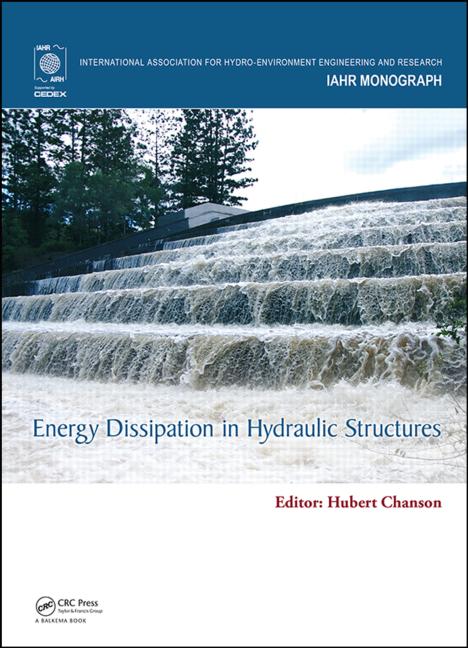
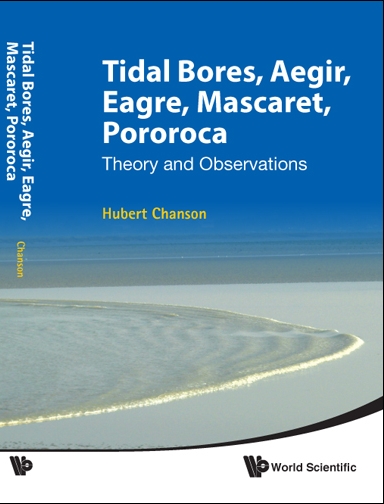
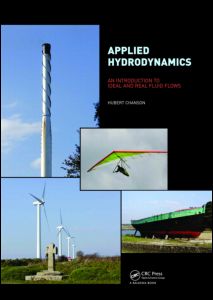


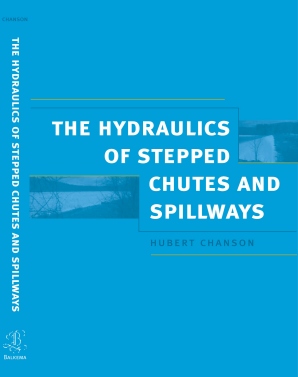
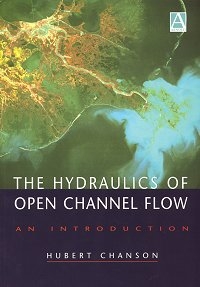



 Culverts are covered channels designed to pass floodwaters
beneath an embankment, typically a roadway or railroad. Figures 1 to 3
present a few examples of box culvert operation in Australia, for less than
design flow conditions. Culverts may cost about 15% of total road
construction costs (HEE 1969). Their designs are very diverse, using various
shapes and construction materials determined by stream width, peak flows,
stream gradient, and minimum cost (HENDERSON 1966, HEE 1969). While the key
design parameters of a culvert are its design discharge and the maximum
acceptable afflux (CHANSON 2004), the variability in culvert dimensions is
closely linked to the various constraints of each site, resulting in a wide
diversity in flow patterns.
Culverts are covered channels designed to pass floodwaters
beneath an embankment, typically a roadway or railroad. Figures 1 to 3
present a few examples of box culvert operation in Australia, for less than
design flow conditions. Culverts may cost about 15% of total road
construction costs (HEE 1969). Their designs are very diverse, using various
shapes and construction materials determined by stream width, peak flows,
stream gradient, and minimum cost (HENDERSON 1966, HEE 1969). While the key
design parameters of a culvert are its design discharge and the maximum
acceptable afflux (CHANSON 2004), the variability in culvert dimensions is
closely linked to the various constraints of each site, resulting in a wide
diversity in flow patterns.

 udies provided quantitative and detailed characteristics of
both fish motion and fluid flow (NIKORA et al. 2003, PLEW et al. 2007). Even
fewer studies reported fish speed fluctuations and fluid velocity
fluctuations, as well as fish response time and integral time scales (WANG
et al. 2016). The fish swimming accelerations have also important
implications in terms of energy expenditure required to swim against the
current over a period of time.
udies provided quantitative and detailed characteristics of
both fish motion and fluid flow (NIKORA et al. 2003, PLEW et al. 2007). Even
fewer studies reported fish speed fluctuations and fluid velocity
fluctuations, as well as fish response time and integral time scales (WANG
et al. 2016). The fish swimming accelerations have also important
implications in terms of energy expenditure required to swim against the
current over a period of time.
 os of fish dimension to turbulent length scale, and the fish
species. The latter may be possibly a most important variable, since design
guidelines developed for one species might be inadequate for another
species. The application of the equation of conservation of momentum
provides a deterministic method to quantify the fish thrust and
instantaneous power expended by the fish to provide thrust. The power and
work required to deliver thrust is proportional to the cube of the local
fluid velocity. Fish can minimise their energy consumption by swimming
upstream in slow-velocity regions. Visual observations in a relatively large
channel showed that small-body mass fish tended to swim next to the sidewall
and corners, and favoured naturally slow-velocity regions. The implications
in terms of fish-friendly box culverts design are developed by CHANSON and
LENG (2021),
os of fish dimension to turbulent length scale, and the fish
species. The latter may be possibly a most important variable, since design
guidelines developed for one species might be inadequate for another
species. The application of the equation of conservation of momentum
provides a deterministic method to quantify the fish thrust and
instantaneous power expended by the fish to provide thrust. The power and
work required to deliver thrust is proportional to the cube of the local
fluid velocity. Fish can minimise their energy consumption by swimming
upstream in slow-velocity regions. Visual observations in a relatively large
channel showed that small-body mass fish tended to swim next to the sidewall
and corners, and favoured naturally slow-velocity regions. The implications
in terms of fish-friendly box culverts design are developed by CHANSON and
LENG (2021),












